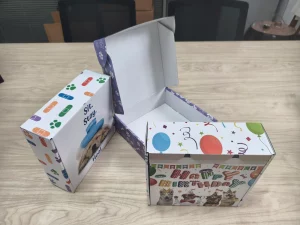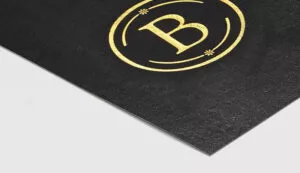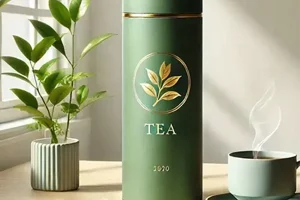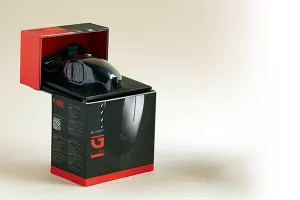I want my packaging to look impressive and also protect products at every step. I wonder if I should choose corrugated or non-corrugated materials. Sometimes I’m worried about durability and cost, but I also need a solution that reflects my brand.
Corrugated materials have a fluted core that adds strength, while non-corrugated materials are simpler and often used for lighter packaging needs. Corrugated boxes excel in protecting heavier or fragile goods.

Let’s unpack the difference between corrugated and non-corrugated boxes, see why corrugated is often favored, and explore the advantages that make corrugated packaging a wise choice for businesses of all sizes.
What is the difference between corrugated and non corrugated?
I sometimes feel uncertain when deciding between corrugated materials with their fluted layers and simpler, non-corrugated options. What sets them apart, and which one is right for my business?
Corrugated materials include a fluted inner layer between flat liners, giving them more strength and cushioning. Non-corrugated materials are single-layer, best for lightweight or short-term uses.

Corrugated sheets or boxes have a multi-layer construction. There’s an inner liner, an outer liner, and a fluted middle layer with wave-like ridges. This fluting creates spaces that help absorb impacts or distribute weight, which is a game-changer if I’m sending items through rough shipping routes. The air pockets in those ridges protect fragile products or heavier goods, reducing damage. In contrast, non-corrugated materials—often called paperboard or cardboard—are a single sheet of heavier paper. They might be enough for lighter packaging, like cereal boxes or retail display cartons, but they rarely stand up well to shipping abuse, especially if the items are bulky or delicate.
I also consider cost-effectiveness. Although corrugated materials can be slightly more expensive to manufacture, they can save money long-term by lowering breakage or returns. If I need robust packaging that lets me skip extra fillers, corrugated might justify the upfront cost. Non-corrugated packaging is cheaper and simpler for items that aren’t prone to damage. So if my product is lightweight or used locally, a non-corrugated box can suffice. However, if a brand stands for premium quality and aims to impress, corrugated packaging helps me create a solid, professional impression.
Sustainability is also a factor. Many corrugated products are made with recycled fibers and can be recycled again, aligning with eco-friendly demands. Non-corrugated boxes can also be recyclable, but they typically lack the same protection level, so I might end up using more protective materials. That extra material usage could undercut some of the savings in both cost and environmental impact.
Branding options vary, but corrugated surfaces are easy to print on or customize. I can add logos, colors, or marketing messages, turning a shipping box into a brand ambassador. If I keep it minimal, I can simply add a sticker or small label. Non-corrugated boxes can still be printed, but the structural integrity might falter if I’m shipping across long distances. If I want an unboxing experience that merges style and functionality, corrugated stands out. For smaller, in-store packaging, non-corrugated can look nice, especially if the item isn’t traveling far.
In short, corrugated packaging is built for heavier loads and rough transportation, while non-corrugated is for lighter, short-term use. The choice depends on my product’s weight, fragility, and shipping conditions. In my own experience, switching to corrugated for certain items drastically lowered damage rates and improved customer satisfaction. It made me realize that the fluted layer is more than a design quirk—it’s a structural advantage. Whether I want minimal or high-end branding, corrugated can handle it all while maintaining product integrity.
Why use corrugated box?
I often wonder how to ship products securely while also impressing customers. Corrugated boxes seem popular, but are they really worth the investment?
Corrugated boxes protect items better, reduce shipping damage, and enhance brand image. They handle heavier weights and are often more cost-effective than other solutions.

Corrugated boxes are the backbone of many shipping operations because they combine durability with affordability. The fluted core between flat liners offers cushioning against impacts, which reduces the likelihood of broken or scuffed products. If I’m tired of hearing about packages arriving dented or torn, corrugated boxes can alleviate that stress. This sturdiness also means boxes can stack neatly without crushing the contents, which is important in crowded warehouses or during transit. Fewer damages mean fewer returns, plus less waste of materials and time.
These boxes also offer strong branding opportunities1. By customizing a corrugated box with logos, brand colors, or product images, I can transform a simple package into a memorable marketing piece. It might cost a bit more, but it can leave a lasting impression. Customers sometimes share photos of well-branded boxes online, inadvertently promoting the brand. An appealing box can create a positive unboxing experience that prompts repeat business.
From a cost standpoint, corrugated boxes are relatively inexpensive to produce, especially in bulk. Their ability to reduce damage can offset any small extra cost compared to non-corrugated materials. Corrugated is also lightweight, which helps lower shipping costs. The flutes provide enough support so I don’t need a huge amount of filler. I’m saving on bubble wrap or air cushions if the box can handle much of the shock absorption on its own.
In terms of sustainability2, corrugated boards are often made from partially or fully recycled materials. They are themselves widely recyclable. Customers increasingly prefer eco-conscious brands that minimize environmental footprints, so using corrugated can show my commitment to green practices. Some businesses print environmental slogans or certifications right on the box, highlighting that the brand takes responsibility for its packaging.
Corrugated boxes are versatile, too. If I sell clothing, electronics, or even food products, I can tailor the box thickness or flute type for the specific use case. Lighter items can use single-wall corrugated, while heavier or fragile goods benefit from double-wall or even triple-wall constructions. This versatility means I can find a corrugated solution for practically any scenario.
Ultimately, using corrugated boxes boosts brand image, safeguards products, and delivers a professional impression. I consider them a practical default for shipping items that matter. Non-corrugated might work for very small or short-range tasks, but for solid shipping performance, corrugated boxes remain a leading choice. As a brand owner, I appreciate how they balance cost, protection, and customization so effectively. That’s why many businesses, from small e-commerce shops to global retailers, continue to rely on corrugated packaging.
What are the advantages of corrugated boxes?
I have heard many claims about corrugated packaging, but I want to be sure it’s the best option for my brand. Let’s see what real advantages it offers.
Corrugated boxes provide excellent strength, flexibility, and cost efficiency. They are lightweight, customizable, and often made from recycled materials, making them both practical and eco-friendly.

Corrugated boxes combine a set of qualities that appeal to many brands. One advantage is their remarkable strength-to-weight ratio3. The fluted core acts like a shock absorber that protects contents from impacts or sudden drops. That means fewer breakages, which is crucial if a brand’s reputation hinges on delivering products intact. The sturdy walls also handle stacking well, so boxes won’t collapse under the pressure when stored or transported in bulk. This structural capability reduces the need for excessive filler materials.
Versatility is another major plus. Corrugated sheets come in various flute profiles (like A, B, C, E, F, etc.), each catering to different needs. For instance, thick flutes provide extra cushioning, while thinner flutes allow more refined printing and smaller box footprints. This range of options helps me tailor packaging to my product specs, whether I’m shipping glass jars or t-shirts.
Cost efficiency stands out, too. Corrugated packaging is widely produced worldwide, making it a competitive market with reasonable pricing. When I buy in bulk, I often get favorable rates. The space-saving nature of flat-packed boxes cuts storage costs, and the time saved in assembly speeds up fulfillment. If I incorporate brand logos or designs directly on the box, I reduce the expense of separate labels or inserts. That integrated branding approach can elevate my presentation without huge design overhead.
Corrugated materials also typically come from recycled fibers, aligning with growing consumer demand for eco-friendly approaches4. Many customers appreciate the idea that their shipping boxes can be easily recycled once the products are removed. This lower environmental impact can become a selling point, especially if I highlight it in my marketing.
Customization is another advantage. The outer liner is conducive to printing—logos, brand colors, or promotional messages. Some advanced printing techniques allow high-resolution graphics, giving a refined look. I can also add special finishes like UV gloss, embossing, or foil stamping. That can produce a premium feel, perfect if I aim to impress customers with upscale unboxing experiences.
Finally, 段ボール箱 help with brand consistency. If I use the same design or color scheme across multiple box sizes, I maintain a unified look. This is helpful if my brand is sold in different retail settings or shipped to customers worldwide. People recognize the pattern or color from a distance, which boosts brand visibility. I find it’s an effective tactic for subscription services, where monthly deliveries can create a sense of excitement purely from seeing that familiar packaging on the doorstep.
Overall, corrugated boxes stand out as an ideal packaging solution for businesses of all types. They handle pressure, display branding, and align with sustainability. They’re cost-effective, widely available, and easy to customize. These boxes solve practical shipping problems while bolstering brand image, which explains why so many industries rely on corrugated packaging as their primary choice.
結論
段ボール包装 excels due to its fluted design, providing superior protection, versatility, and eco-friendliness. This strength makes corrugated boxes a top choice for brands seeking durable, memorable packaging.
-
Discover strategies to leverage packaging for branding, creating memorable customer experiences and promoting your brand effectively. ↩
-
Learn about the eco-friendly aspects of corrugated packaging and how it can enhance your brand’s commitment to sustainability. ↩
-
Understanding the strength-to-weight ratio can help you appreciate the durability and efficiency of corrugated boxes in packaging. ↩
-
Explore eco-friendly packaging solutions to meet consumer demand and enhance your brand’s sustainability efforts. ↩








